Can Rega’s new Nd3 moving magnet phono cartridge elevate a much-loved classic to new heights?
The Planar 2 is a stepping-stone option between Rega’s affordable Planar 1 and its multi-award-winning Planar 3.
| Pros | Cons |
| Open, natural sound | Molded phono cable output |
| Superbly built & engineered | A little reserved in the mid-range |
| Impressive soundstage at this price | Pricey if you’re in the USA |
| Higher-end feel than some competition |
The current iteration of the Planar 2, released in 2016, introduced several key design improvements. While it’s been on the market for a few years, this version has a notable new feature: Rega’s recently launched Nd3 moving magnet cartridge.
Now available as a factory-fitted upgrade, the Nd3 should pique the interest of those seeking an upgrade from the very humble but capable Rega Carbon cartridge.
The Rega Carbon cartridge comes as standard on the Planar 1 and Planar 2, and for such an affordable, entry-level cartridge, I’ve been very impressed with its sound.
That said, there’s some debate over whether the Rega Carbon is truly competitive, especially given its similarities to (or potential basis on) the Audio Technica AT3600L with its conical stylus.
Most other turntables at this level are fitted with a cartridge sporting an elliptical stylus, so I think there is some fair criticism here. Common examples are the Ortofon OM05 or even the 2M Red, for example.
Given Rega’s superb reputation for engineering incredible tonearms with ultra-low friction bearings, it’s easy to see why some consumers may see the Planar 2’s stock cartridge as a shortcoming in an otherwise excellent design.
The New Nd3 Moving Magnet Cartridge
According to Rega, the Nd3 is the first moving magnet to utilize a Neodymium N55 magnet. As the world’s most powerful commercially available magnet, this, in theory, provides the cartridge with more power than standard bar-magnet designs.
The use of a neodymium magnet borrows from moving coil cartridge designs, including Rega’s own models, and it is the use of this magnet that should potentially allow for a lower overall mass, meaning less inertia, and therefore a performance that closer resembles a moving coil design. This is an exciting concept, as moving coil designs are well-known for their more open, dynamic, and expressive sound.
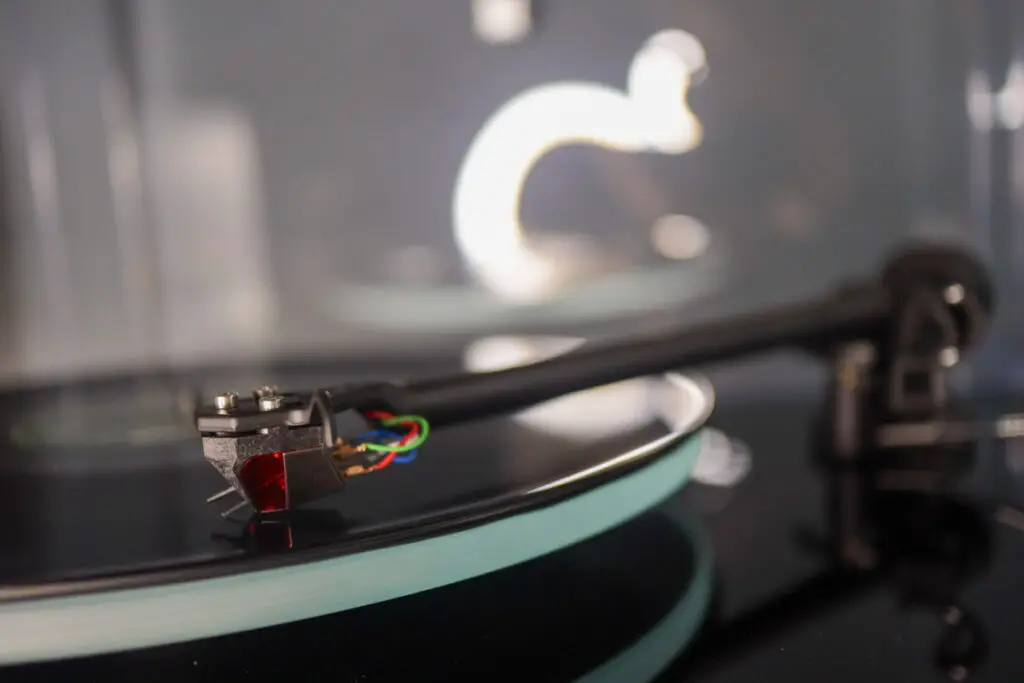
A Recap on the Planar 2
As a significant upgrade to the Planar 1, the Planar 2 features a single-piece tonearm with ultra-low friction bearings, and as of 2020, Rega have also included an adjustable anti-skate (bias) setting, to allow greater flexibility and compatibility with a wide range of cartridges.
Other key features include a 24 V low noise, low vibration motor, a 10mm thick floating glass platter, and a brass central bearing. Rega places great emphasis on creating friction-free, low-vibration bearings; in this incarnation of the Planar 2 central bearing, Rega claims the design offers an improved fit and less stress on the bearing, preventing the transfer of unwanted energy.
The plinth is a high gloss acrylic, available in black, white, red, and a walnut effect. It’s a smart finish that is supported by low-surface contact feet, offering solid vibration control, but sadly no height adjustment for leveling the turntable.
Underneath the plinth is a simple rocker switch for starting the motor; there’s no speed control on the Planar 2, which means you’ll have to move the drive belt manually by lifting the platter, as is the case with many minimalist Rega & Pro-Ject turntable designs.
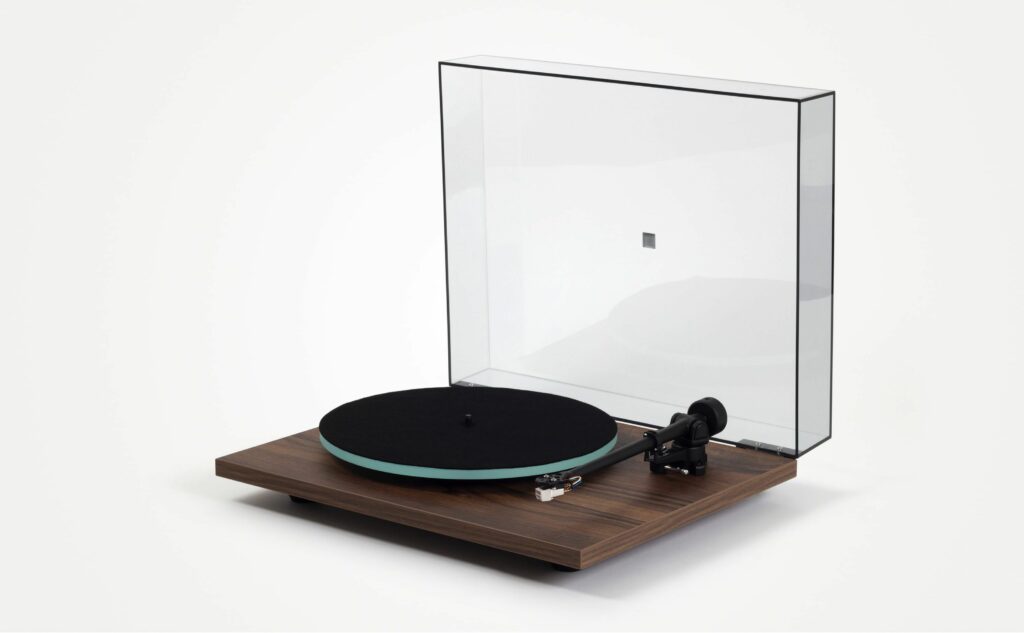
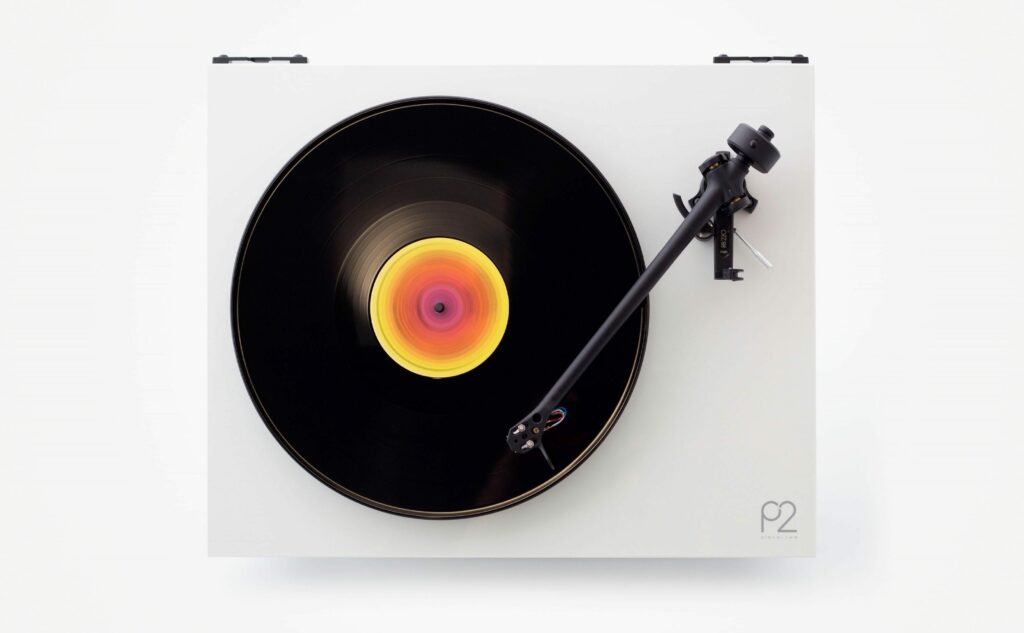
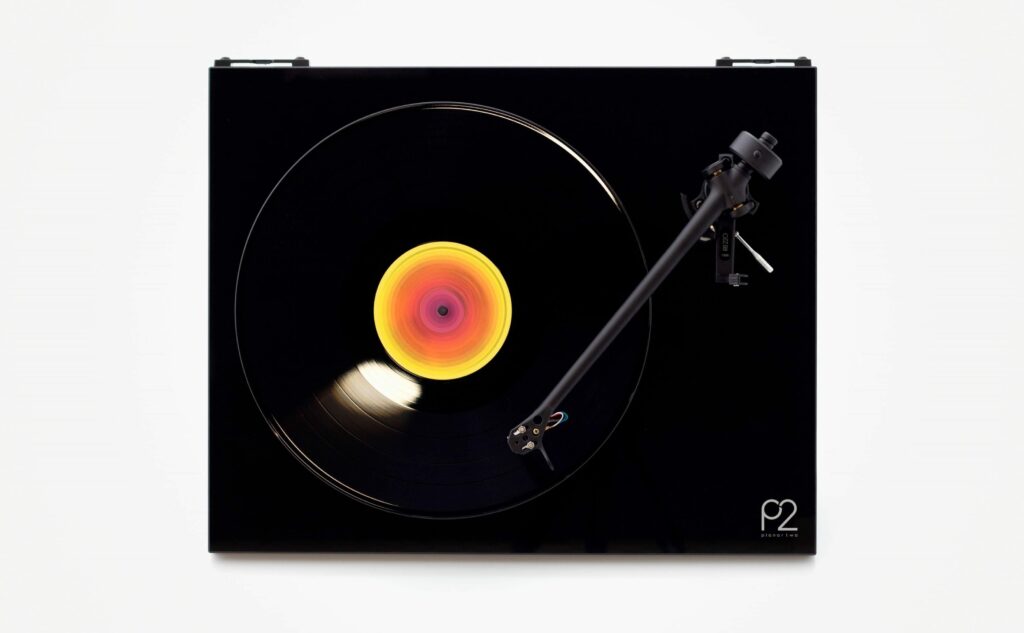
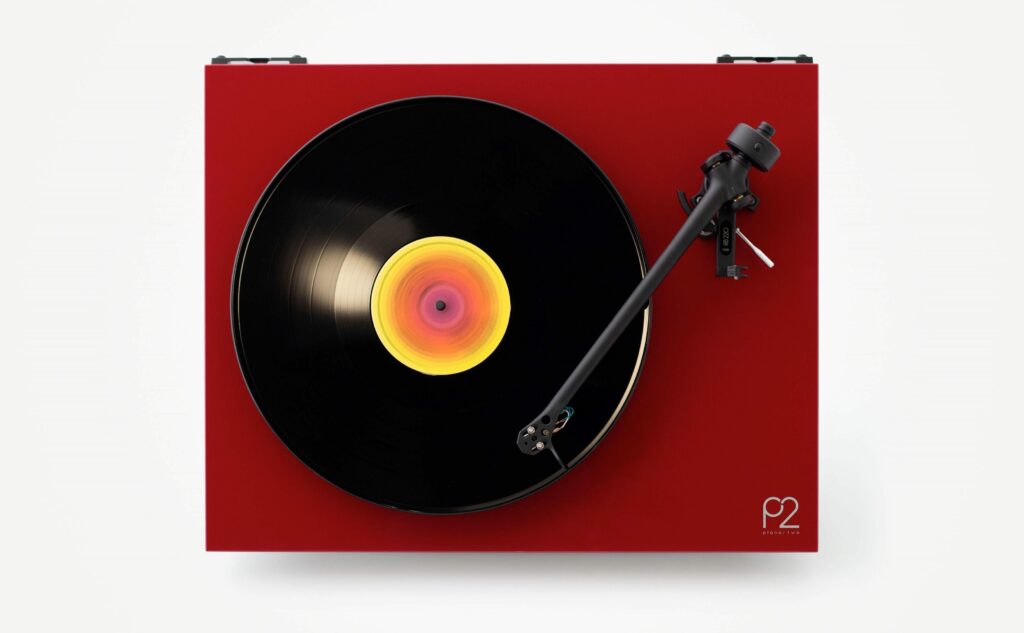
Turntable Setup
Setting up the Planar 2 is relatively simple. The drive belt is pre-installed, meaning all you need to do is un-package the platter, remove the card slip, and place the glass platter on top of the sub-platter.
Installing the counterweight to set the appropriate tracking force is trickier, as there is no traditional dial with numbers to help you make adjustments. In the conventional sense, you’ll need to balance the tonearm so it hovers evenly across the platter before then applying the correct downward force for the cartridge (in this case 1.7g).
The instructions state that half a turn of the weight equals 1g of downforce, giving you a rough idea, but I decided to check it using an electronic tracking force gauge. The lack of numbers on the weight could cause one or two confusions in the setup process for absolute beginners.
Inside the box is a cartridge protractor for checking alignment, but since the Nd3 is factory fitted, there’s really no need to use this right out of the box.
For those who might be eyeing up the Nd3 as an upgrade, however, it’s worth noting just how easy this cartridge is to align (assuming you’re fitting it to a Planar 2 or 3 tonearm). Thanks to the company’s three-point mount system, so long as the three bolts are attached, the alignment will be perfect. Pretty clever!
Competition
Turntables of a similar budget buyer’s might consider include the Pro-Ject Debut EVO 2 (£499/$699), or perhaps the Fluance RT85 (£420/$499).
The Debut EVO 2 comes with a TPE-damped aluminum platter, which is a downgrade on the glass platter, in my opinion. Pro-Ject’s carbon fiber tonearms have a lot going for them, but I really wish they’d move away from the weight and fishing wire as a means of setting anti-skating. I do, however, prefer Pro-Ject’s choice not to incorporate a molded power cable and the traditional counterweight with a dial, which I just find easier to set up.
That’s said, both are superb turntables at their price points with a similar ethos where the focus is on the core mechanics of turntable playback, particularly high-quality frictionless bearings, instead of features or bells and whistles.
Fluance turntables, in my experience, seek to strike more of a balance between usability, features, and sound quality. Particularly in the US, Fluance turntables present exceptional value for money when looking at feature sets considering Rega and Pro-Ject turntables are generally more expensive across the pond.
Features such as speed control, detachable headshells, adjustable isolation feet, and high-quality factory-fit stylus options make for an impressive feature set that is hard to argue with. That said, there is less of a purist mindset when it comes to bearings and tonearm design.
For example, I own a Fluance RT85, and there is a noticeable amount of play in the tonearm bearing, which you simply won’t find in a Rega design. Purists will also argue the virtues of single-piece tonearms. Play-in bearings and additional connection points can both have an impact on unwanted resonances. Choosing the right ethos for you simply comes down to your priorities and preferences.
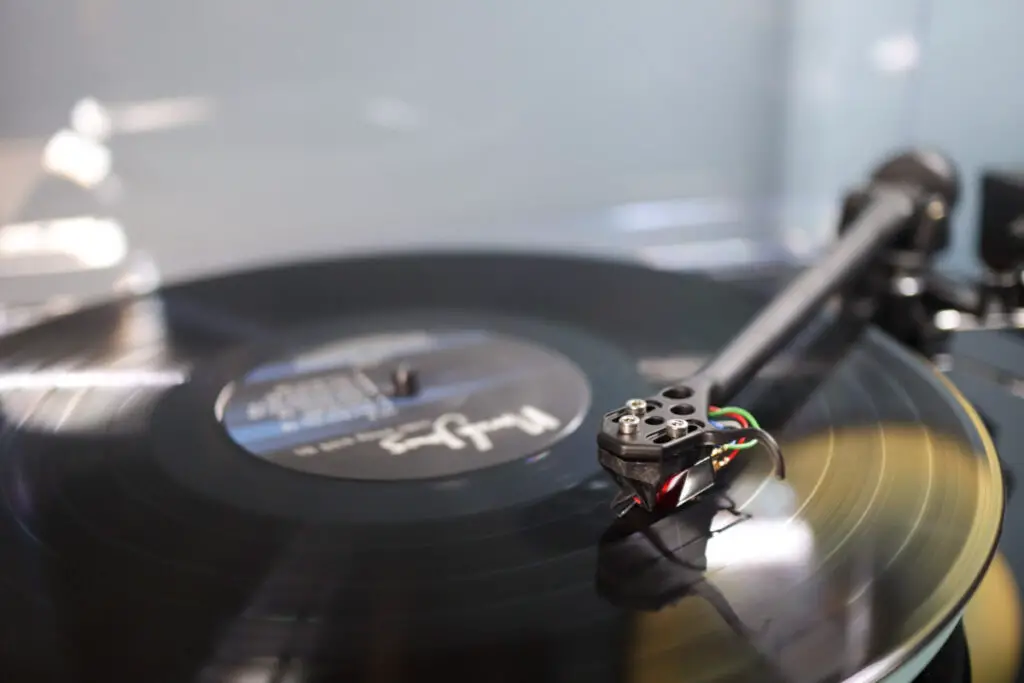
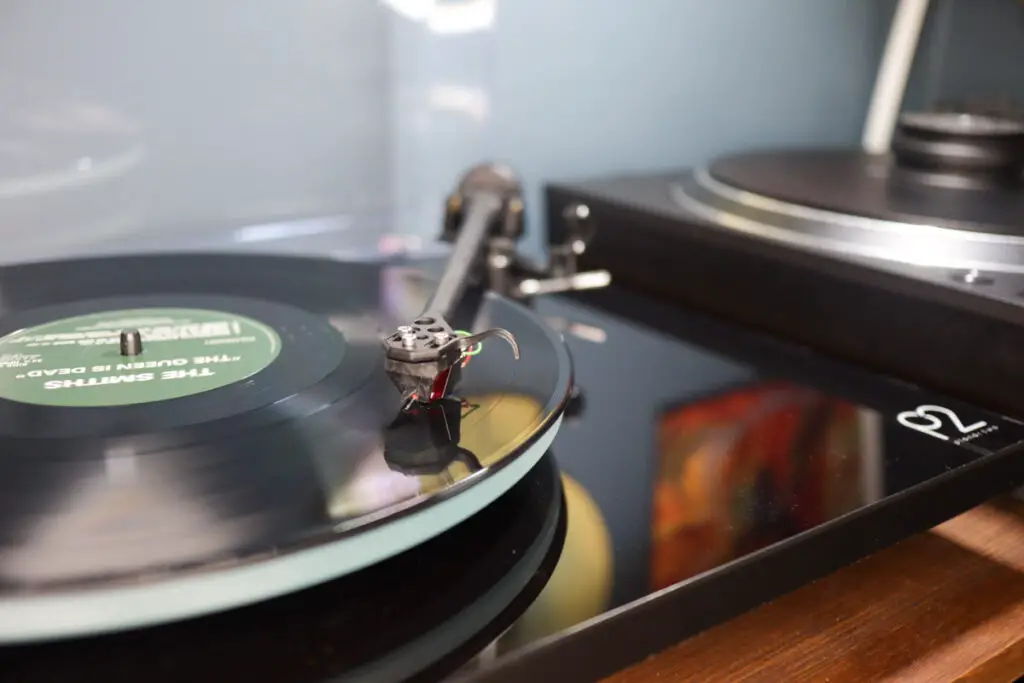
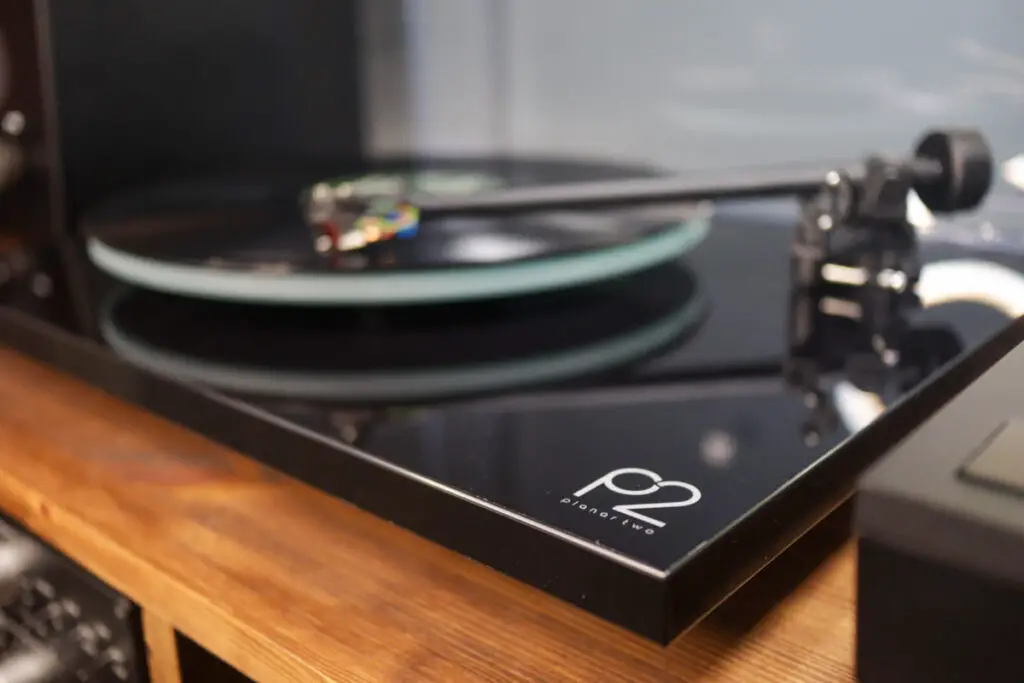
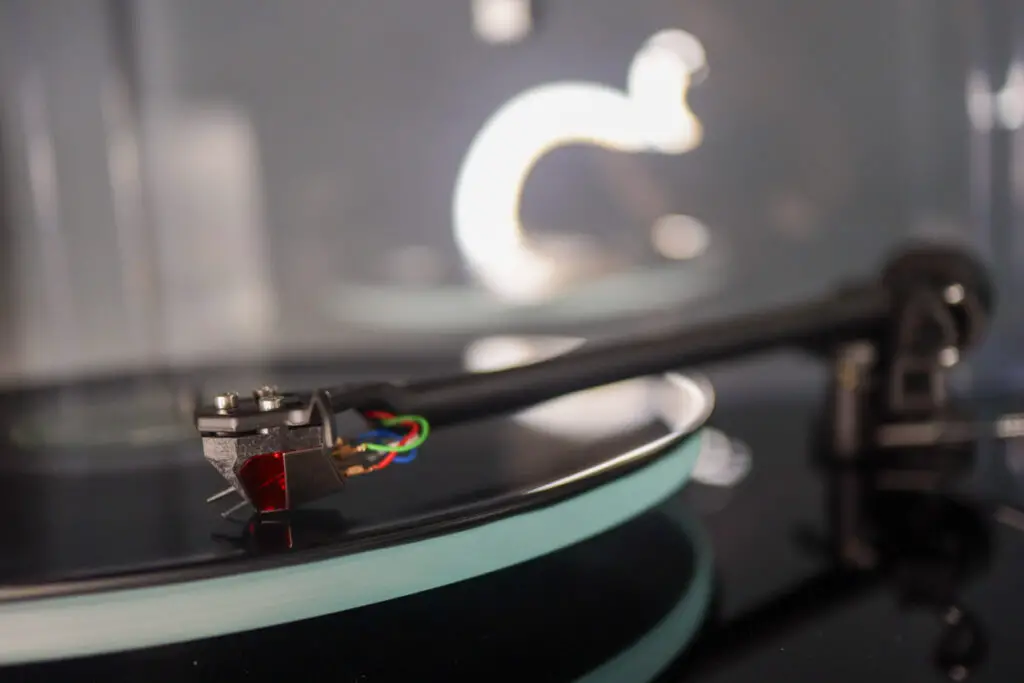
Listening Test
The Planar 2/Nd3 presents a very noticeable signature style of sounding spacious and open, bringing in a sense of air that I usually associate more with moving coil cartridges.
Incidentally, I’ve recently captured quite a few recordings of the Ortofon 2M Red on my Patreon account for A/B gear shootouts. For comparison, I pulled up the same records I’d used for those samples and span them on the Planar 2 to gain a sense of how the Nd3 compared.
I started with a copy of The Smiths The Queen is Dead. On the track “Big Mouth Strikes Again”, the difference was night and day.
The Nu3 has impressive instrument separation with a wider soundstage than the 2M Red. Tonally, though, it’s a little reserved in the mid-range, which some listeners may seek out, while others, not so much.
The 2M Red has a reputation for having quite an accentuated upper mid-range, which becomes more apparent than ever while placing these two models side-by-side.
“Big Mouth Strikes Again” is quite a transient heavy song, which really showcases the Nd3’s level-footing and assured confidence. The Planar 2, equipped with the Nd3, handles the jangly guitar and nimble Hi-Hat work with natural ease. It’s a much more reserved, less erratic rendition than I’ve heard from turntables fitted with Ortofon cartridges.
Switching over to a copy of Norah Jones’ Come Away with Me, a testing favorite of mine for bringing down the pace, and the Planar 2 presents the airy open quality of the track “Come Away with Me” beautifully with a tremendous sense of width. With a degree of reserve comes more balance in this instance, as where some of the vocals on this track can produce sibilance, the Planar 2 (Nu3) glides through with ease, bringing only crisp clarity and a breathy atmosphere.
The Bottom Line: Rega Planar 2/Nd3
The Planar 2 is an exceptionally well-made turntable that gets all the important mechanics spot on without breaking the bank. Listeners hoping for lifestyle features, like speed control or detachable headshells, will perhaps go wanting, but purists will appreciate the emphasis on quality engineering and simplicity.
The addition of the new Nd3 cartridge brings some welcome sound characteristics akin to moving coil cartridges, even if those looking for more energy and zing from their cartridges may find the sound a little reserved.
Rega’s Planar 2/Nd3 gets you a great deal closer to the esteemed Planar 3 model while also representing exceptional build and sound quality. Its steady footing and natural, open sound are its most vital qualities that make this turntable a sophisticated choice that still stands out in an increasingly competitive market.
View Product: Rega Planar 2 – £499/$775
View Product: Rega Planar 2/Nd3 £599/$795
Further Reading:

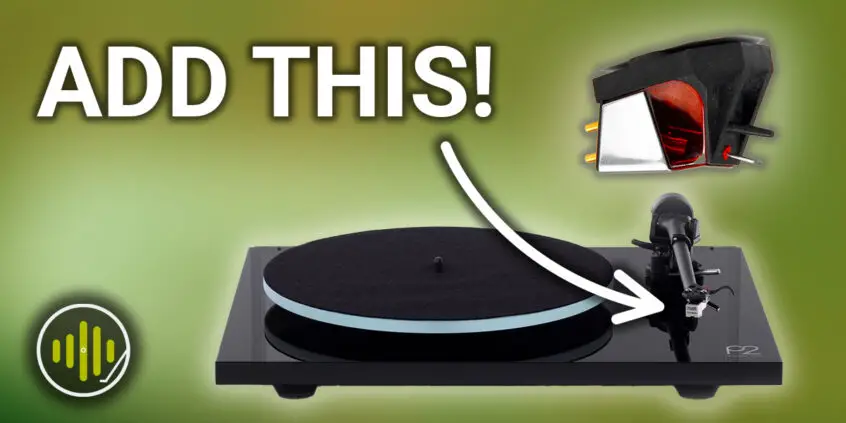


Started with the Planar 2 when restarting my vinyl journey.
I was surprised at how good it sounded.
Upgraded to the Planar 3 after a couple of years. Have my 3 running off the external power supply, with the new belt. Keeping in the Rega camp running through the Fono MM phono stage. I was using the Elys cart but have changed to the new ND5 cart…… Wow what a difference that has made, in every aspect
I am a big fan of the Rega ethos of building in house in the UK rather than outsourcing.
Very unusual to see that the US has to pay more but I guess that’s the exchange rate.
Great stuff. The Planar 3 is a real sweet spot I think. Keeping within the Rega eco-system helps with grounding I’ve found, and the Fono MM sounds great. Yes, the price difference in the US makes it a tougher sell for some unfortunately. Happy spinning Dave. Thanks for sharing.